Thornless red-fruited gooseberry variety Freedonia
When choosing gooseberries for their plot among the variety of varieties and varieties, many give preference to the thornless red-fruited variety Freedonia. You will learn from our article why gardeners love it, as well as how to care for the shrub so that it does not disappoint.
Gooseberry Freedonia: variety description
Freedonia is a tall, thornless and mid-season gooseberry variety with tasty bright red berries. The variety is unpretentious and, subject to a few rules of agricultural technology, produces an excellent harvest of aromatic berries.
History of origin and distribution
Freedonia is one of the oldest varieties of the crop. It was obtained by Canadian breeders back in 1927 and for almost 100 years it has been grown in plots next to new gooseberry varieties, not inferior to them either in taste or in harvest volume.
Freedonia is successfully grown throughout Russia.
Characteristics and description of bushes
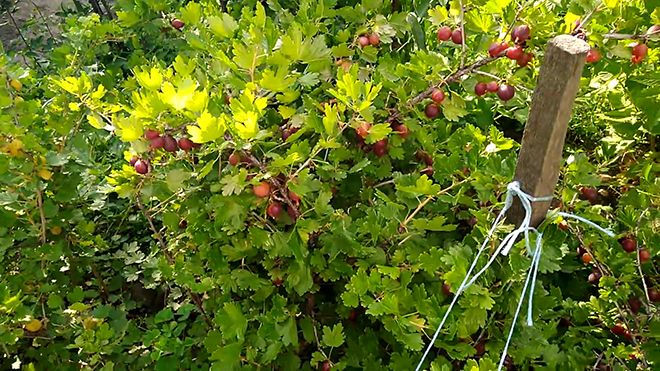
The main distinguishing feature of the variety is its thornlessness. If the branches of other varieties are covered with sharp thorns, then Freedonia has smooth shoots.
This gooseberry is a tall gooseberry; the bush can reach up to 1.5 m in height. The variety is not spreading, upright, with a compact crown, which greatly facilitates harvesting. The shoots are powerful and can do without garters.
The berries are large, round, weighing up to 7 g, bright ruby color. The taste is memorable - a mixture of wild strawberries, pineapple and fresh linden honey.
Reference. The variety bears fruit from the third year after planting until 20-40 years.
Freedonia is also valued for its high yield and persistent immunity to disease.
Temperature resistance
Freedonia gooseberry can withstand frosts down to -30°C, and, provided there is good winter shelter, even lower temperatures.
Moisture and drought resistance
The variety tolerates changes in humidity and short-term drought well. But since the root system of the shrub is shallow, prolonged drought can destroy the plant, so on such days it requires moderate watering.
Resistance to diseases and pests
The Fridonia variety is characterized by increased resistance to fungal diseases (powdery mildew, rust, etc.) and pests (sawfly, aphids, etc.). But it must be remembered that immunity is preserved provided that the plant is properly cared for and the rules of agricultural technology are followed.
Characteristics and description of fruits
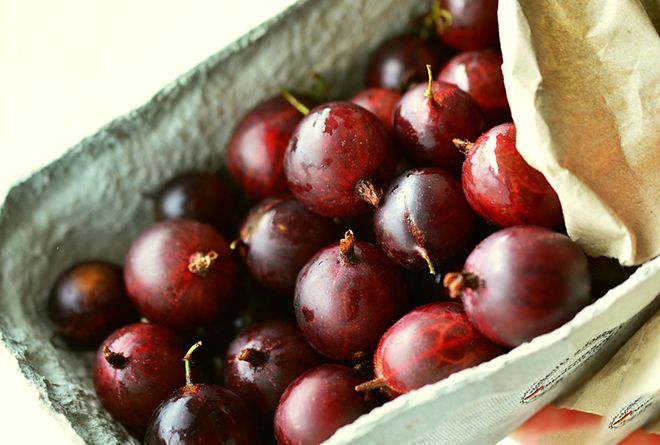
The berries of the Freedonia variety are considered one of the most delicious and sweet; they combine three amazing flavors - strawberry, linden honey and pineapple. The berries are large in size, up to 7 g, round in shape, bright red in color, do not fall off after ripening and stay on the branch for a long time.
Gooseberries contain large amounts of:
- vitamins A, B, C, E, etc.;
- macroelements (potassium, phosphorus, magnesium, sulfur, etc.);
- trace elements (copper, aluminum, rubidium);
- saturated and unsaturated fatty acids, including Omega-3 and Omega-6;
- fiber, fructose, sucrose.
Application area
Due to their rich chemical composition, the berries of the Freedonia variety are widely used in home medicine and cosmetology as an anti-inflammatory and regenerating agent.
In cooking, gooseberry fruits are used to prepare delicious compotes, jams and marmalade.
Advantages and disadvantages compared to other varieties and hybrids
According to reviews from gardeners, the gooseberry variety Freedonia has a number of advantages:
- thornlessness;
- sweet memorable taste;
- high productivity;
- resistance to drought and frost;
- immunity to diseases and pests;
- the berries stay on the branches for a long time after ripening;
- suitable for cultivation throughout Russia;
- There are many options for use - both fresh and prepared.
Almost no shortcomings have been identified in the variety. Summer residents only note the need to monitor the degree of soil moisture and carry out preventive measures in the spring to maintain the plant’s resistance to diseases and pests. The simplest method is pouring boiling water.
Growing technology
The technology for growing the Fridonia variety does not differ from the agricultural technology of other gooseberry varieties.
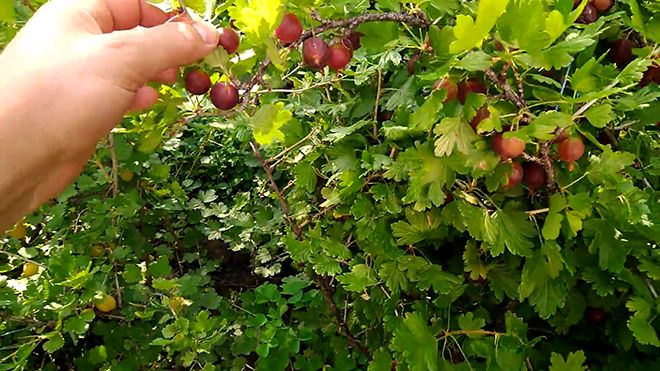
Optimal conditions
Gooseberries are a light-loving plant, so the planting location should be sunny. If the site is dominated by heavy clayey soil, they must be sanded, and acidic ones must be deoxidized, for example, with wood ash (1-1.5 kg per 1 sq. m) or chalk (0.5 kg per 1 sq. m). The pH level for gooseberries should not exceed 6.5. Loam is considered the optimal soil.
It is also necessary to pay attention to the groundwater level - it should not be higher than 1 m from the surface of the earth, otherwise the gooseberry roots will begin to rot due to increased humidity.
Landing dates and rules
The optimal planting time is autumn, from early September to mid-October. In this case, the plant will have time to take root and prepare for winter. In the southern regions, gooseberries can be planted in early spring.
Holes for the bush are dug to a depth of 40 cm with a distance of 2-2.5 m from each other. The soil dug out from the hole is mixed with a quarter of a bucket of rotted manure and a quarter of a bucket of sand. The resulting soil is used to fill the planting holes, where two more matchboxes of superphosphate and potassium sulfate are added.
The root collar of the seedling is deepened by 7-9 cm.
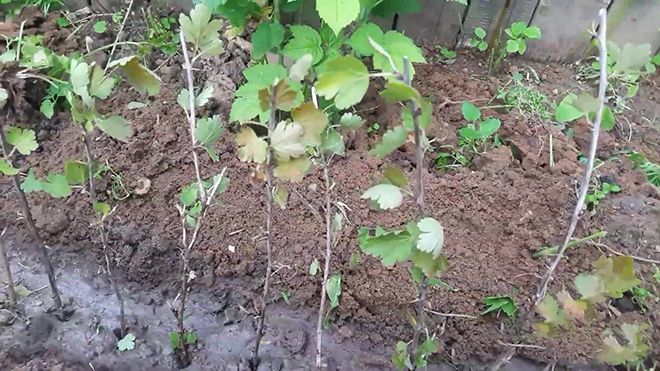
Further care
Further actions are simple. This is standard gooseberry care, which consists of timely pruning of damaged branches and, if necessary, watering and fertilizing.
Pruning of damaged and dry branches is carried out in early spring, before the buds swell. In the fall, it is necessary to prune old branches that are more than six years old. Berries will no longer appear on such branches.
Pruning is carried out so that the plant receives more light and air. The procedure also stimulates the emergence of new shoots.
Important! Be sure to treat the cut area with garden varnish.
Gooseberries do not require regular watering; the bush is additionally watered only during prolonged drought. Watering is done with warm, settled water.
To improve the growth of gooseberries and the quality of the harvest in spring, the soil around the bush can be enriched with organic matter, nitrogen or potassium fertilizers.
Possible problems, diseases and pests
Diseases such as anthracnose, rust, and gray rot can become a big problem for the crop. Among the insect pests for gooseberries, the most dangerous are sawflies, moths, aphids, and spider mites.
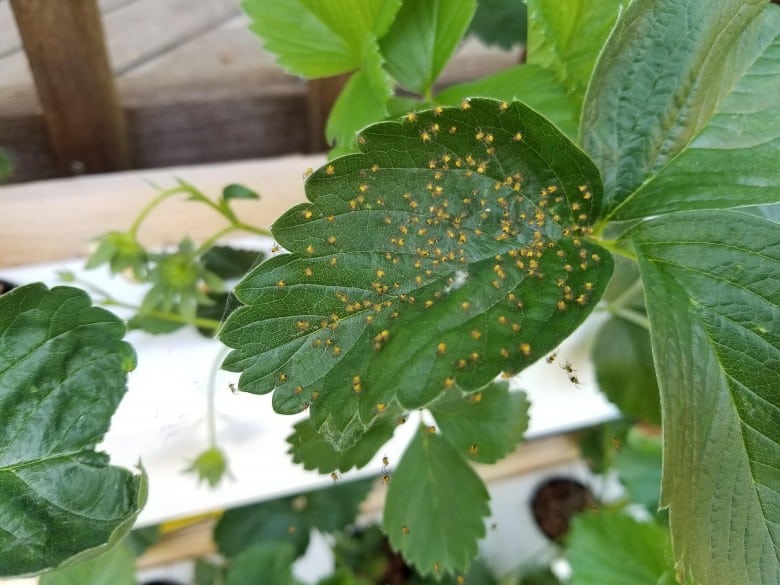
It is easier to prevent the appearance of pests and diseases than to treat the plant later. Therefore, preventive measures are needed in early spring.
The simplest and most effective method of pest prevention is boiling water.. The method helps to destroy insect larvae in the ground. You can pour boiling water over gooseberry bushes only in early spring before the first buds appear, otherwise the crop will die. It is not allowed to pour boiling water over the bush itself; hot water is used either for spraying or for root watering. One bush requires 3-4 liters of boiling water.
If signs of pest infestation do appear, special preparations are used, for example, “Antara” or “Entobacterin”. During processing It is necessary to strictly follow the instructions on the packaging.
Attention! Treatment with insecticides is carried out no later than a month before harvest, with biological products - two weeks.
If the plant is affected by fungal diseases, you can resort to traditional methods and spray the gooseberry bush with copper sulfate or Bordeaux mixture. For treatment, a 1% solution is prepared, about 1.5 liters of the drug per bush. Spraying is carried out in the spring, before buds open, and in the fall, after leaf fall.
If traditional methods do not work, use chemical fungicides, for example, Vectra or Cumulus, following the instructions.
Wintering
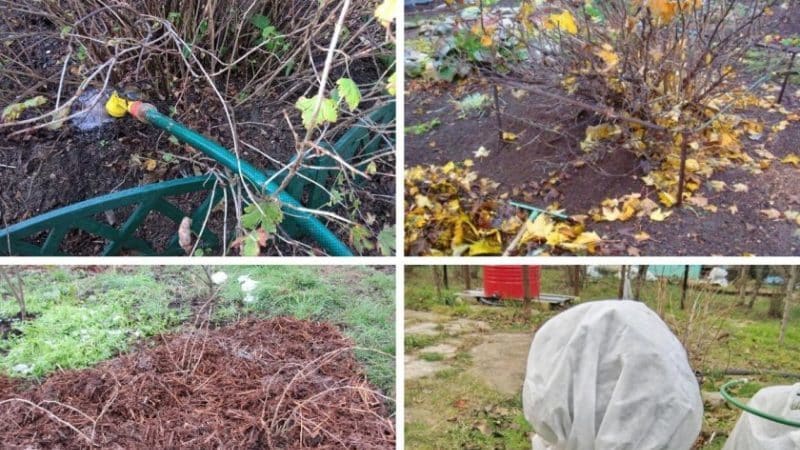
Although Freedonia tolerates severe frosts, it is still necessary to prepare the plant for wintering.
This is done according to the following algorithm:
- After harvesting, cut off old branches.
- If autumn is dry, the plant is watered abundantly. This increases its winter hardiness.
- At the end of the harvest, feeding fertilizer, for example, “Autumn”. To prevent the appearance of diseases and pests, the bush is shed with a weak solution of potassium permanganate.
- Before covering the plant for the winter, the tree trunk circle is mulched with peat or humus.
- For the winter, the bush can be wrapped in covering material.
- If the winter is snowy, a snow cushion is built over the bush.
Reproduction
All varieties of gooseberries are propagated in the same way: by seeds, cuttings, layering or dividing the bush.
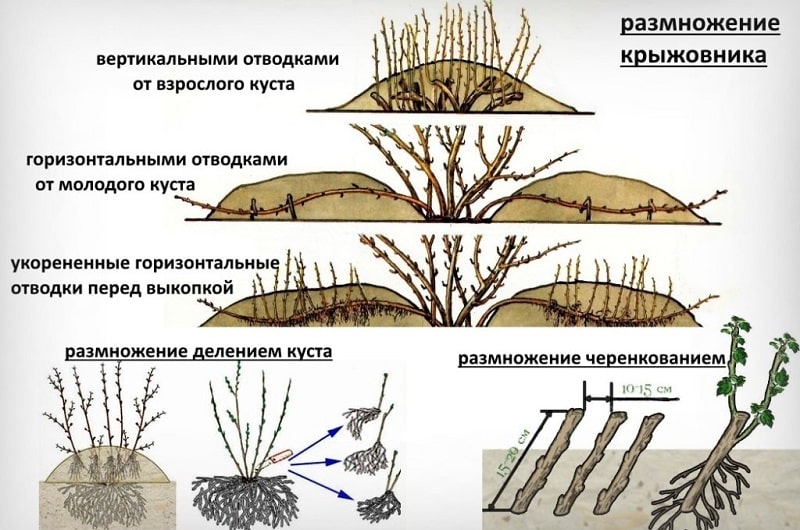
The most popular methods are propagation by cuttings and layering.
Reproduction by layering carried out in early spring. The lower branches are pressed to the ground and sprinkled with soil so that a shoot with 5-6 buds remains on the surface. The place where the branch is underground is shed generously. By autumn, such layering has time to take root. Then it is carefully separated from the mother tree and transplanted into a school for growing.
Propagation by cuttings also carried out in early spring. Young shoots with 5-6 buds are cut off and soaked for a day in a root formation stimulator, for example, in “Kornevin”. The next day the cuttings transplanted a substrate of peat and sand mixed 1:1 is periodically watered to keep the soil moist. By autumn, the cuttings take root and are transplanted into schools for growing.
Features of cultivation depending on the region
Gooseberries of the Freedonia variety grow well throughout Russia; there are no particular differences in its cultivation in different regions.
The only difference is in preparing the plant for winter and the timing of harvest ripening.
Pollinator varieties
Freedonia is a cross-pollinated plant, so it is better to plant 3-4 different varieties on the site.
The following varieties are considered universal gooseberry pollinator varieties: Russian, Plum, Yubileiny and Chelyabinsk green.
Reviews from gardeners
Judging by the reviews of summer residents, Freedonia is not giving up ground on new products, and is still in demand as it was several decades ago.
Elena, Tyumen: “This variety is the best for me - the most delicious, most productive and unpretentious.Every year I collect at least 7 kg from the bush, we eat a lot of fresh berries, and I make jam from the rest. The taste is finger licking good!”
Semyon, village Taiga: “Freedonia has been growing on my plot for ten years now, every year it pleases me with delicious berries, I can’t keep my grandchildren away! I can tell you from experience: if you loosen the root soil several times a season, the harvest will be much better and larger. In clogged soil, the bush probably does not have enough oxygen for full development.”
Conclusion
High yields, unpretentiousness and excellent taste won the hearts of gardeners at the beginning of the 20th century. And until now, Freedonia is grown in all regions of our huge country. By following the basic rules of agricultural technology, you will delight yourself with a tasty and healthy harvest.